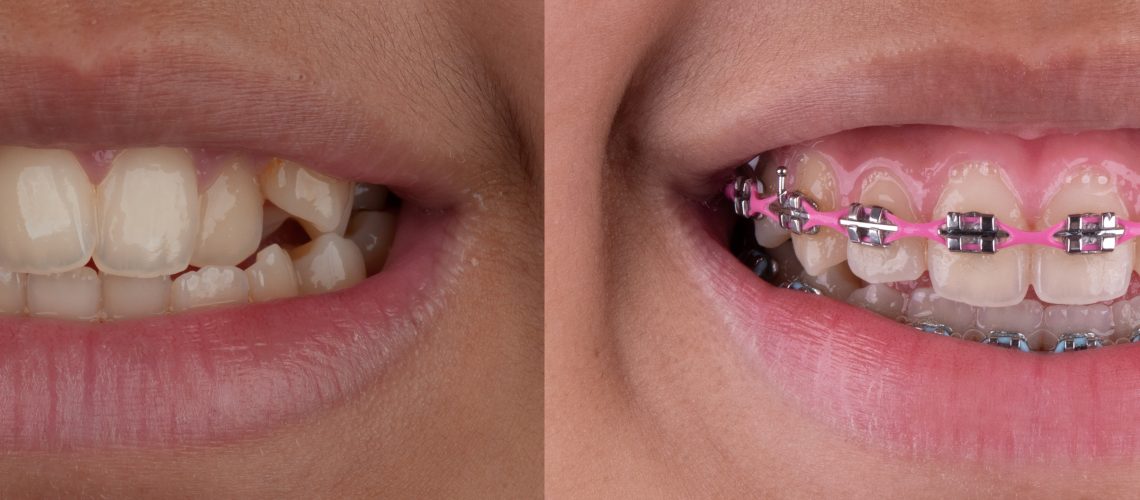Top Things to Know Before Getting Braces
Braces can dramatically improve your smile and dental health — but they do come with some adjustments. Here are the top things to know before starting:
Before you get braces, it’s essential to understand the various types available. Traditional metal braces are the most common, but there are other options like ceramic braces, lingual braces, and clear aligners. Each type has its pros and cons, so discussing these with your orthodontist can help you choose the best fit for your lifestyle and dental needs.
1. Are braces painful? What should I expect during the first week?
You may feel soreness or tightness for a few days after getting braces. This is normal as your teeth begin to move. Over-the-counter pain relief and soft foods can help ease discomfort.
During the first week after getting braces, you may also notice some changes in your speech. It’s common to have a slight lisp or difficulty pronouncing certain words. Most people adjust quickly, so practice speaking aloud and give yourself time to adapt. Additionally, maintaining good hygiene becomes even more critical with braces. Make sure to brush after every meal and use interdental brushes to clean around the brackets.
2. What foods should I avoid with braces?
Avoid hard, sticky, or chewy foods like gum, popcorn, nuts, and toffee. These can damage brackets and wires. Cut raw veggies or fruits into small pieces to protect your braces.
In addition to avoiding hard, sticky, or chewy foods, it’s also advisable to limit sugary snacks that can lead to plaque buildup. Foods like soda and candy can contribute to tooth decay, especially if they get stuck in your braces. Focus on a balanced diet that includes soft fruits, cooked vegetables, and dairy products to promote your overall dental health while wearing braces.
3. Can I play sports or musical instruments with braces?
Yes! We recommend wearing a mouthguard for contact sports. Musicians may need a short adjustment period, but you’ll quickly adapt to playing wind instruments with braces.
For athletes, wearing a mouthguard is crucial for protecting not just your braces but also your teeth and gums. There are specialized mouthguards designed for braces, which can provide both comfort and security. As for musicians, adapting to braces can be a bit challenging at first, but many find that with practice they can still excel in their performances. Consider consulting with your music teacher for tips on how to adjust your technique.
4. How often will I need to visit the orthodontist?
Most patients visit every 4 to 8 weeks for adjustments and monitoring. These appointments are crucial to keeping your treatment on track.
During your orthodontic visits, your orthodontist will adjust your braces and may also provide you with updates on your progress. It’s a good opportunity to ask any questions you may have, including concerns about your treatment timeline or how to handle specific situations, such as food choices or sports participation.
5. Are there any risks or side effects of wearing braces?
Risks are minimal, but possible side effects include gum irritation, enamel stains, or root shortening in rare cases. Proper hygiene and regular checkups help prevent issues.
Understanding the potential risks can help you stay vigilant. Gum irritation is often caused by not cleaning around brackets effectively, so using a soft-bristle toothbrush and gentle technique is essential. Your orthodontist might also suggest using a fluoride mouthwash. Stains can occur if plaque is not removed regularly, so maintaining a good cleaning routine is vital. If you experience severe discomfort or notice any changes in your teeth, such as mobility, contact your orthodontist immediately.
🦷 Thinking about braces? Book your consultation with Polaris Dental in Brampton and let’s build your new smile together!
In addition to consultations, consider attending workshops or seminars about orthodontic care and maintenance. Many dental offices host events to educate patients on what to expect while wearing braces. Engaging with a supportive community can also provide encouragement and shared experiences, making your orthodontic journey smoother and more enjoyable.

